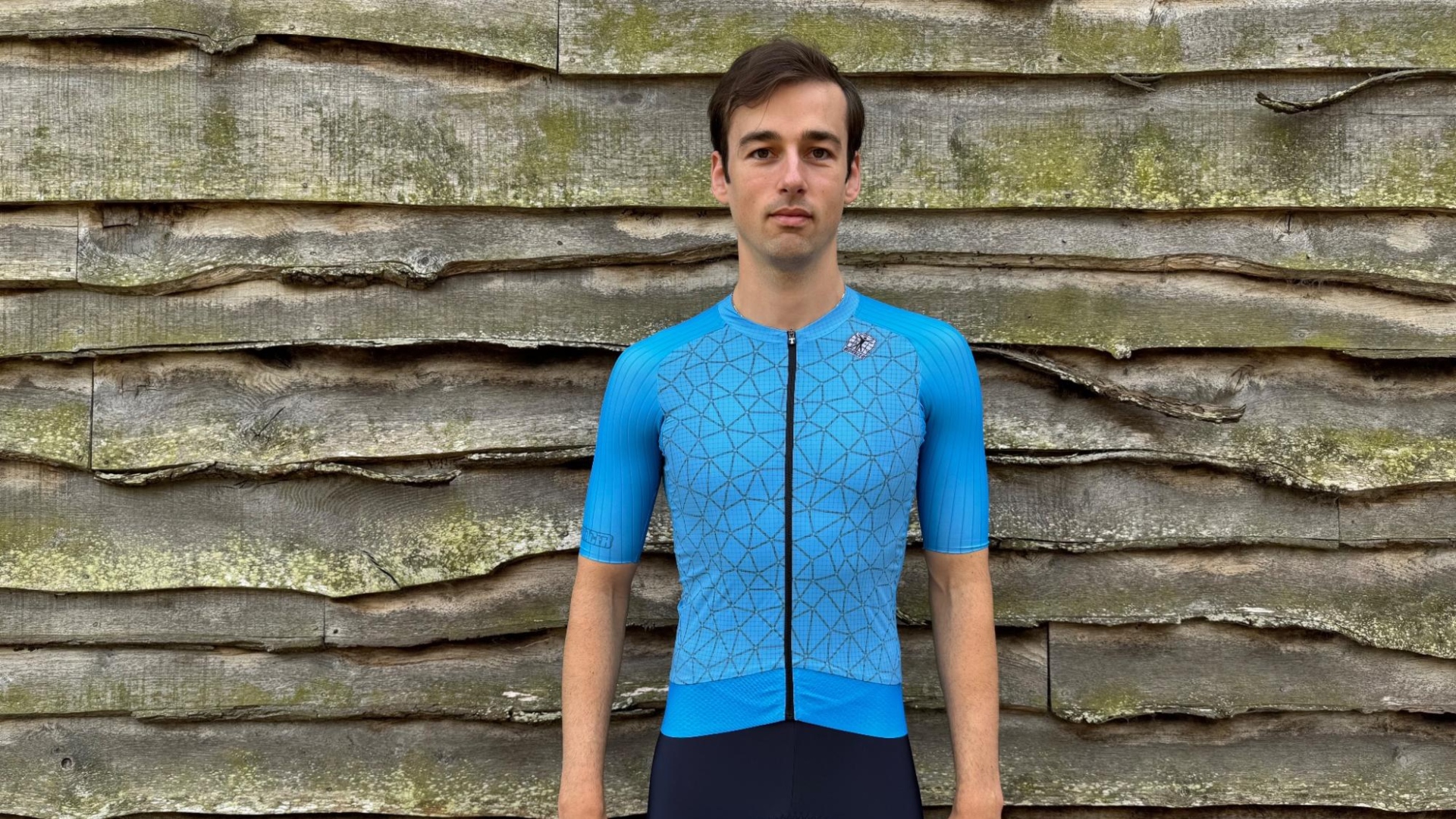
Bioracer has been a long-time maker of Speedwear, a line of performance apparel for which every watt counts. The brand has been seen in the WorldTour peloton over the years, and it’s been worn by National teams in World Championships and Olympic events.
The brand is based in Belgium, where all its products are tested in its Protolab as well as out on the roads by its athletes. It produces all of its garments in-house to reduce its ecological footprint. Here I review its Graphene jersey to see how it compares to the best cycling jerseys for summer and indoor riding.
Construction
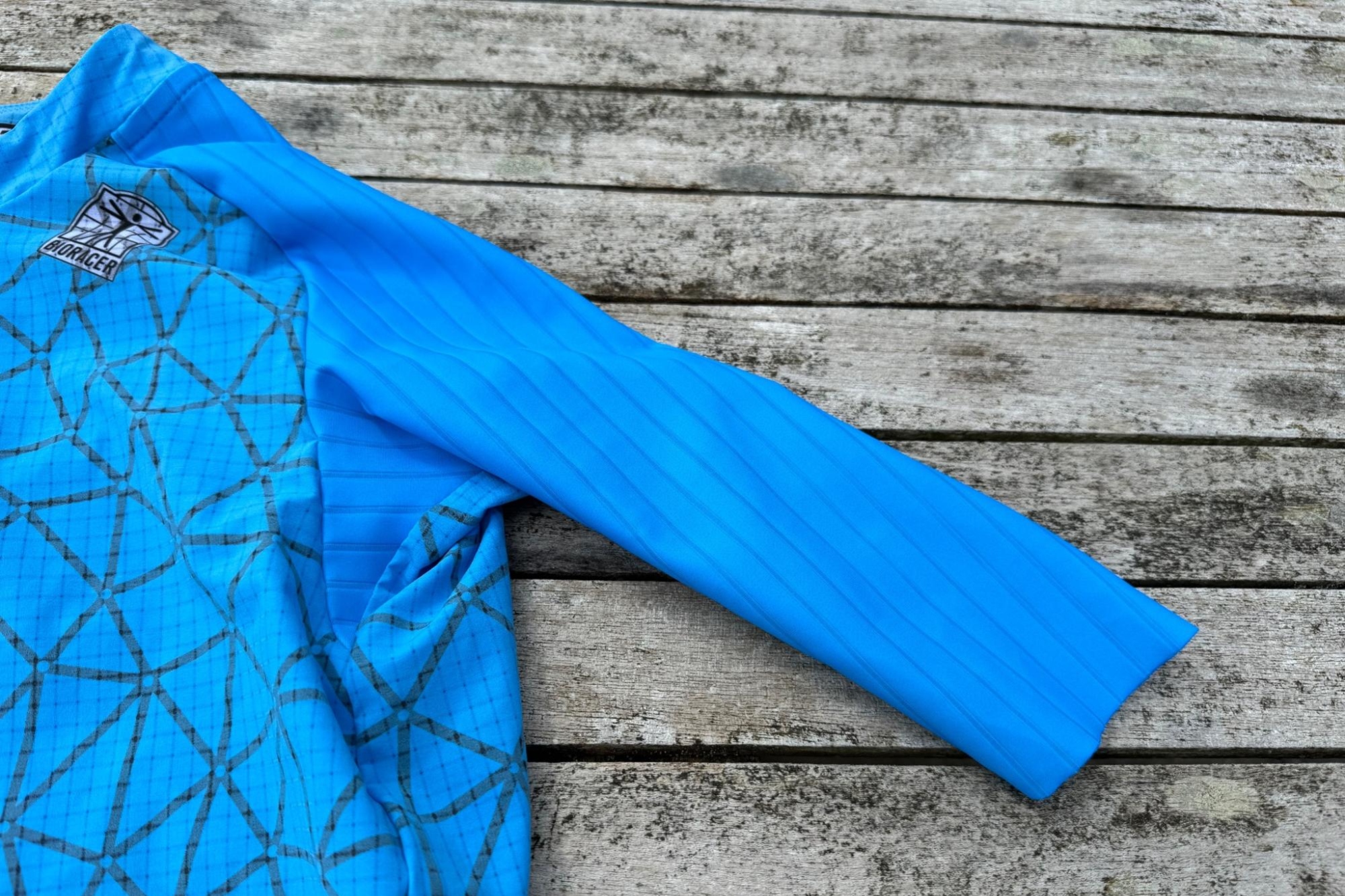
The Bioracer Graphene jersey is designed primarily to help dissipate body heat quickly during indoor training or hot weather racing. This is thanks to the incorporation of a criss-cross of black graphene webbing across the front and back of the jersey. The idea is that Graphene, as a brilliant temperature conductor, will transfer the heat from your body to the outside of the jersey, which, with adequate airflow, will increase the rate of cooling.
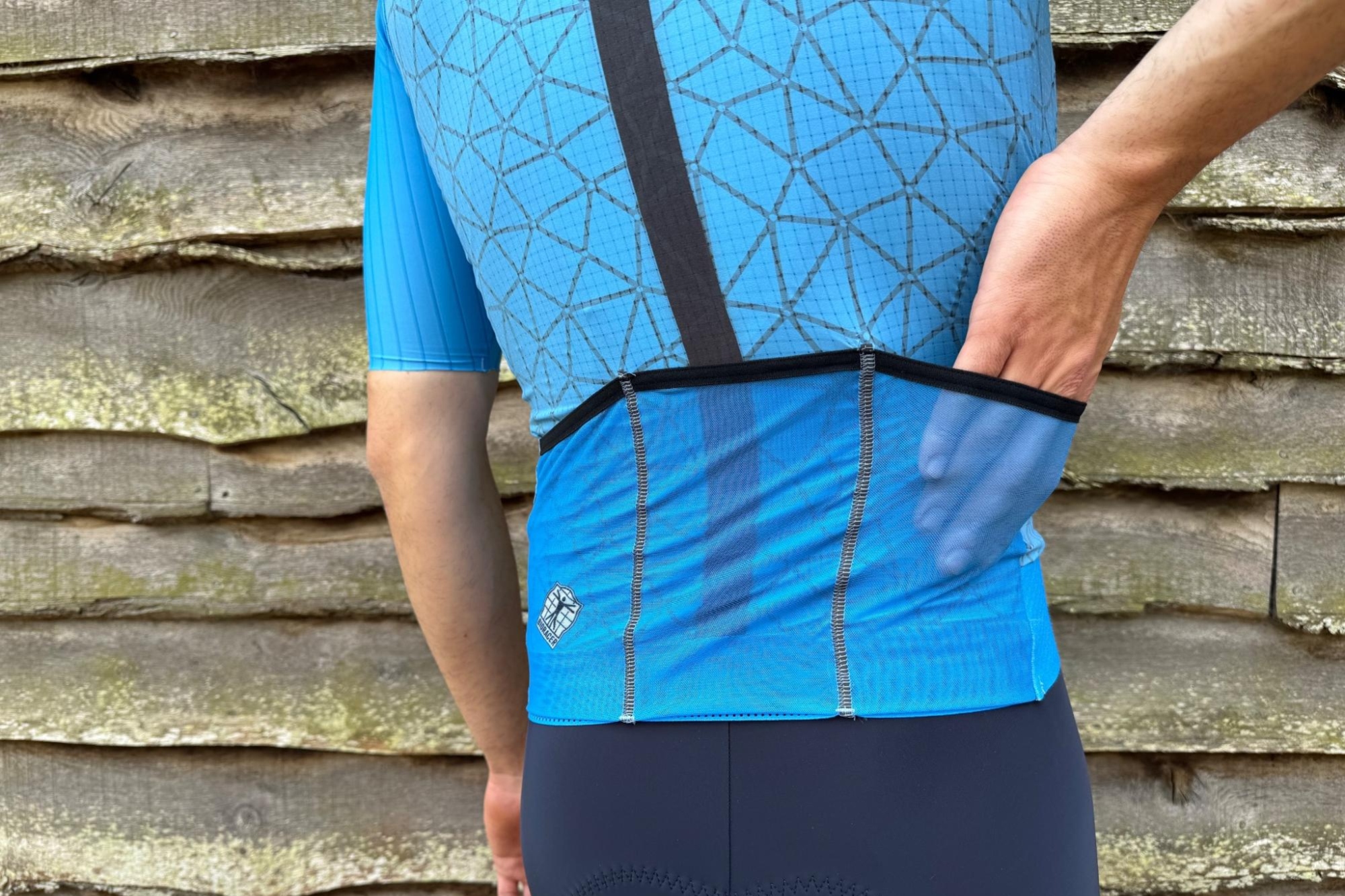
The jersey also features a full length zip, aero ribbed fabrics on the sleeves for fast-paced racing and riding, and three rear pockets made of mesh so they don’t hinder the cooling effect of the primary fabric. Blue Azure and Grey are the colour options available, and sizes come in a range from XS to XXL.
The ride
Given the mild outdoor temperature this spring and early summer, and that the jersey is part of Bioracer’s new Indoor Cycling range, I tested the jersey exclusively on the turbo to thoroughly challenge its cooling capabilities.
The experience with the jersey was a very interesting one. Normally when I train on the turbo it’s just a case of a mesh base layer and shorts, never a jersey, mainly because I generate a lot of heat and usually need at least one fan, an open window, and a dehumidifier. Initially, with the Graphene jersey, I did feel warmer for having a jersey on. Part of this is that the sleeves are constructed from an aero-profiled fabric that is not as breathable, and the body of the jersey is not mesh, unlike other apparel in its line as well jerseys from brands such as Le Col. However, Bioracer says this jersey is exclusively to use WITH a fan, rather than without - they have a mesh jersey for that.
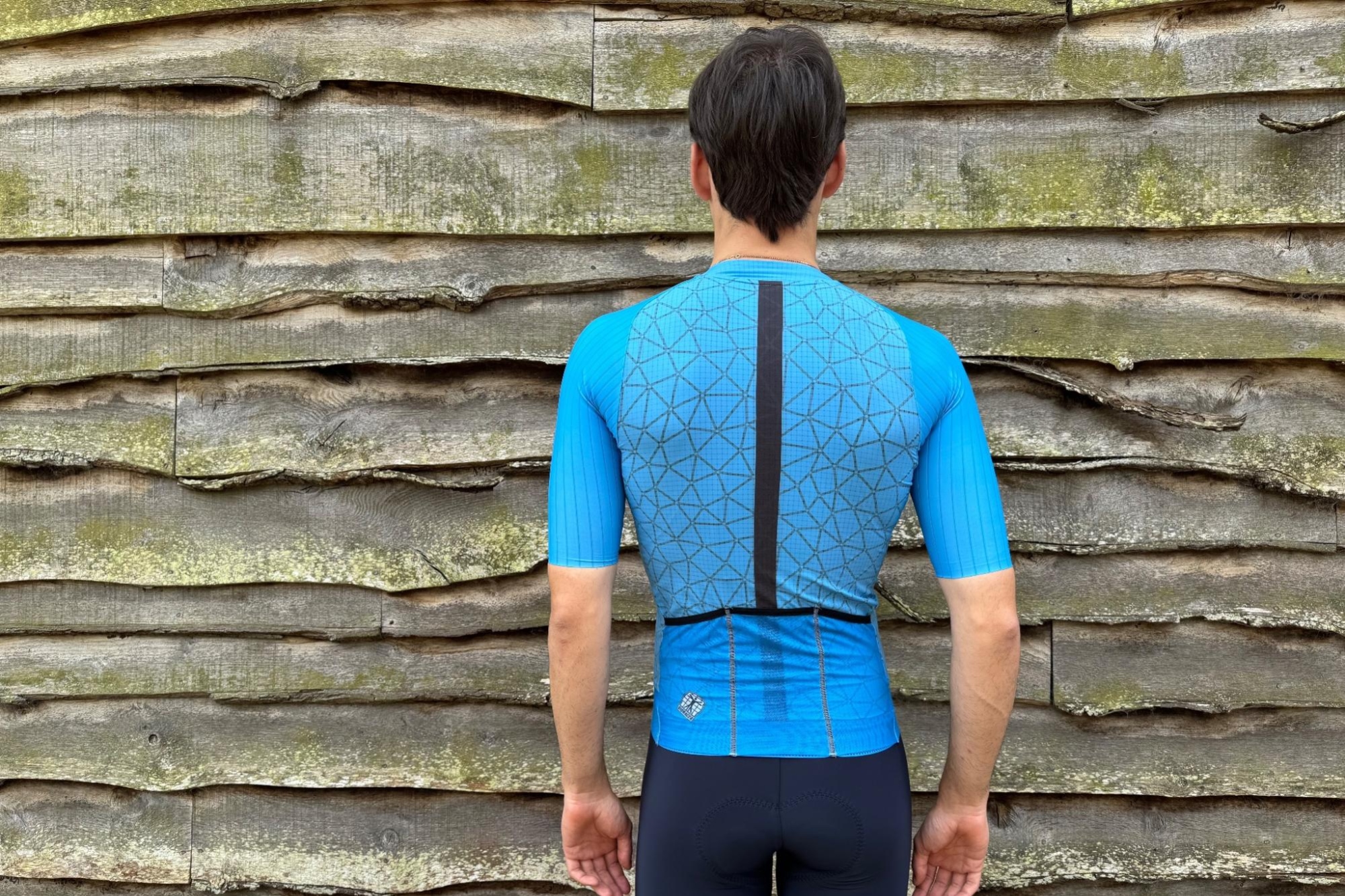
With the fan on, I did not initially feel a huge difference in temperature, so I started to do some efforts to get my core temperature up. Curiously, during some threshold efforts, the heat levels felt higher than normal. Part of this, I think, was down to the sleeve material impeding my ability to lose much heat around the armpits or across my back. Unzipping the jersey felt substantially cooler, with the airflow hitting my skin directly. However, when I dropped the intensity for the recovery periods and wasn’t generating as much heat, the jersey did feel like it cooled down very quickly. It almost felt like the graphene gridding was sapping away the heat from me, and dissipating it quickly, which felt similar to being doused in water. It was a very strange experience but it did work very well. Some of this could be that heat transfers faster the steeper the temperature gradient, so if the body is 20 degrees warmer than the surrounding environment, it will cool at a faster rate than if it was just 10 degrees warmer.
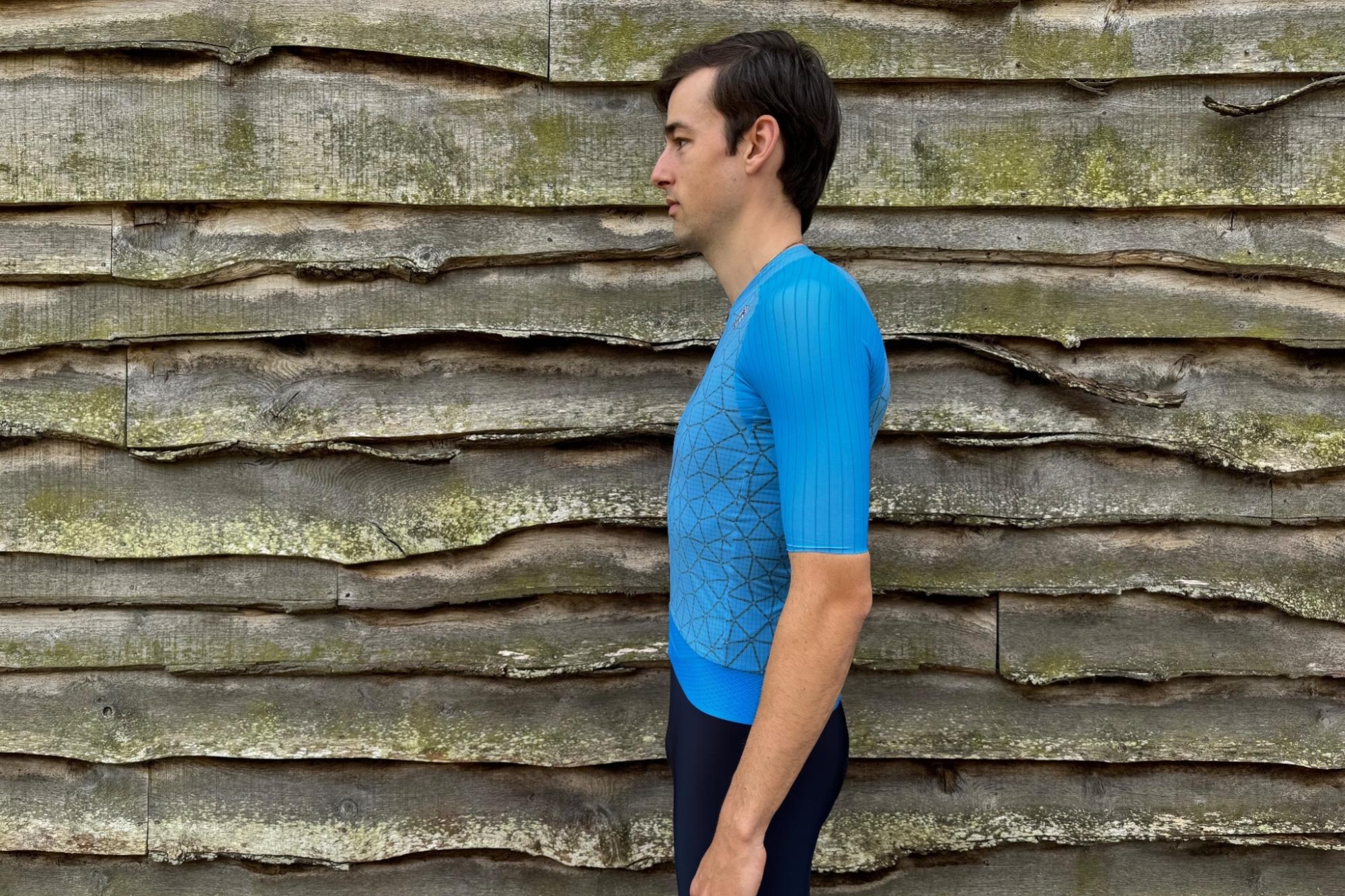
Another interesting experiment I did was to leave the jersey out in the sun for a period. The reason heat dissipates is because the external temperature is cooler than the internal temperature, which is how graphene conduction occurs. But, if you leave that graphene in the sun and it heats up more than your body, can it actually increase your temperature? In my very unscientific test, 20 minutes in the sun (on a day when the temperature was 8 degrees) did make the black graphene parts of the jersey warm to the touch. Obviously, this is with zero airflow, but I wonder how effective the material would be in direct sunlight on a hot and calm day when going low speeds and producing a lot of heat such as when climbing?
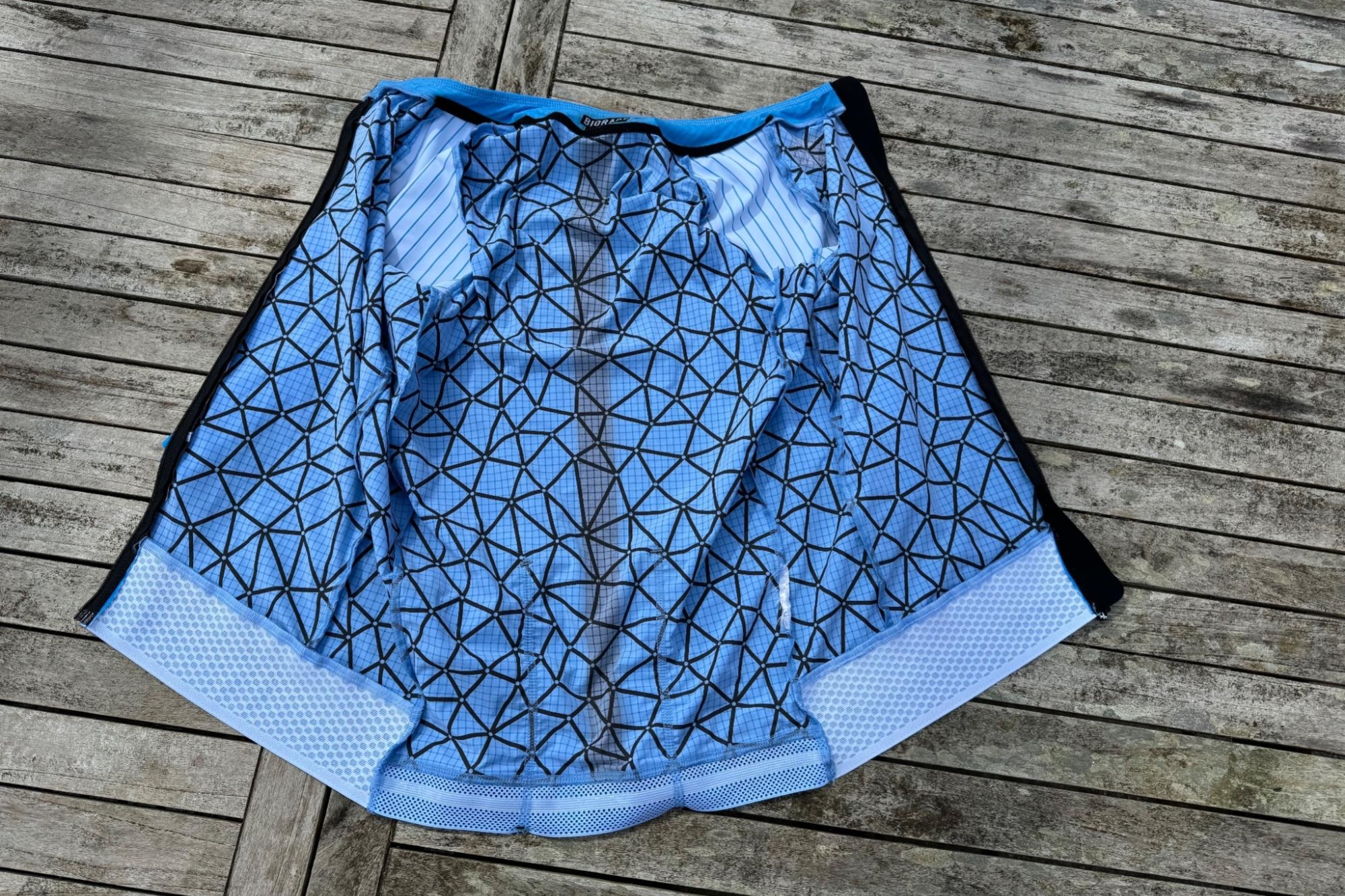
I can confirm that when you do heat up a lot, such as during efforts, this jersey does cool you down quicker in the recovery periods than a mesh jersey, provided you have a fan running. And, if the sleeves weren’t there I suspect it could be even more effective as a vest. As a jersey to use outside in warmer conditions, I can see it working well provided the temperature didn’t exceed 35+ degrees and airflow remained consistent. It will be interesting to add an update about outdoor performance when the weather gets warmer.
Value and conclusion
In terms of value there appears to only be one other Graphene cooling jersey on the market, the Q36.5 Dottore Clima Jersey, but that comes in at £190. At £118.72 the Bioracer jersey certainly isn’t at the high-end price-wise for a warm-weather jersey, especially as it boasts some aero elements.
The Bioracer Graphene jersey presents an interesting piece of kit. For indoor riding, it can cool you down very quickly, but can also contribute to heat buildup in the first place. Outside, it has the potential to be very good in temperatures below 35 degrees provided you maintain airflow and you aren’t riding in direct sunlight







